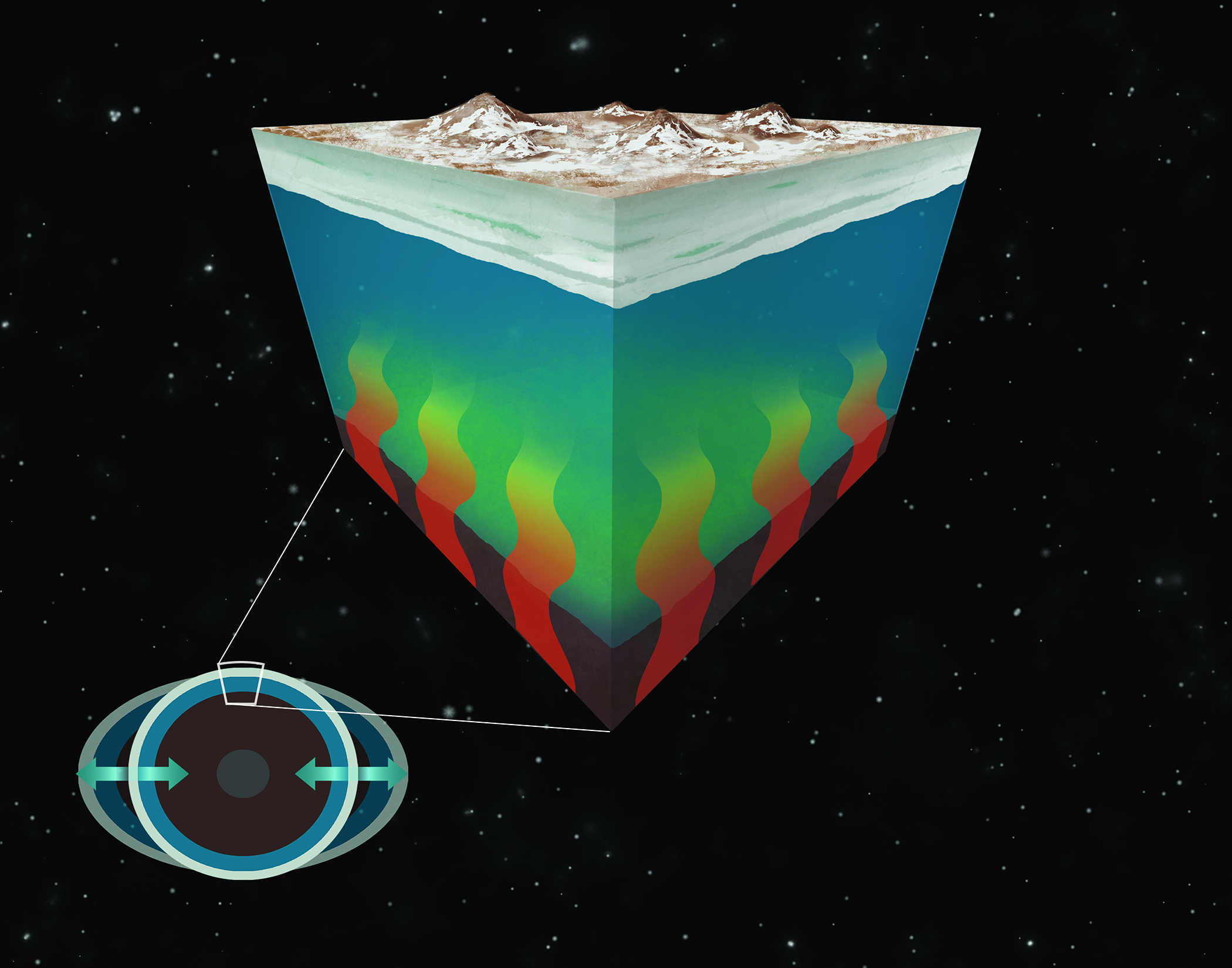The tides of Ocean Worlds
Past space missions have revealed the existence of liquid water beneath the surfaces of Jupiter's and Saturn's icy moons. The source of energy that sustains this liquid water remains a mystery. The most probable explanation is dissipative tides raised by the parent planet, heating the moons through friction. However, the exact mechanism by which tidal energy is converted into heat is not yet fully understood.

Our team showed that inertial modes excited by tides and libration can amplify the viscous dissipation in the ocean of Enceladus, one of Saturn's moons (Rekier et al., 2019).
Although this dissipation is insufficient to close the heat budget, tidally excited fluid modes have characteristic signatures observable from space that can be used to probe the interior of icy moons.